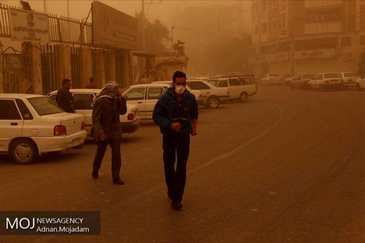By Saida Ali Hammadi
A report from the Iranian Students News Agency has warned of an imminent and life-threatening medical crisis in the Ahwaz region due to waterborne diseases, with the drastically reduced water supply largely unfit for human consumption. Many in the region attribute the latest crisis to the catastrophic effects of the regime’s rerouting of Ahwaz’ rivers which once made it one of the most fertile areas in the region.
According to the ISNA report, several cases of Hepatitis A have already been confirmed in the Ahwaz region, with Dr. Iraj Nazari, the chancellor of the Ahwaz Jundishapur University of Medical Science warning that “the consequences of water shortages, drought and their effects on the prevalence of waterborne diseases will be severe.” Emphasizing the grave magnitude of the crisis, Dr. Nazari explained that the drop in water levels is associated with widespread contamination and pollution of the remaining supply, adding that the regular and sustained power cuts mean that the region’s health centres are unable to ensure the vaccines can be safely maintained, rendering them ineffective.
Another regional official, Nasser Mousavi Nezhad of the Islamic Council of Ahwaz City told IRNA that, particularly in the most deprived areas of Ahwaz which suffer from chronic poverty, such as Ain 2, Hasir Abad, Malashiya, and Alawi, the presence of sewage and other pollutants in the water supply makes the drinking water unfit for human consumption or even for bathing and personal hygiene, leading to intolerable suffering and disease for the people there.
During the last meeting of the Ahwaz City Council, officials announced that the city not only suffers from air pollution ten times above the level set as safe by international authorities, but expressed grave concern at the severe pollution in the water supply, with increasing salinity due to the decreased flow meaning that it is no longer suitable for drinking or even for irrigation of agricultural crops.
Recent years have seen regular protests over the unpotable and often foul-smelling water supply in the region, with the chairman of the Ahwaz University of Medical Science, Dr. Ismael Edani, stating flatly in 2016 that it was “a miracle from God” that the Ahwazi people survive at all given the horrendous level of air pollution which is amongst the highest in the world, and the foul contaminated water. Dr. Edani further pointed out that 75 percent of the sewage in the region is poured into the once-bountiful Karoon River, from where it makes its way into the people’s water supply, leading to disease outbreaks.
Most Ahwazis believe that the horrendous air and water pollution in the region are not accidental but the results of a cruel, decades-long policy of systemic anti-Arab racism on behalf of successive regimes. As the region housing over 95 percent of the oil and gas resources claimed by Iran, Ahwaz, which was once known as a regional breadbasket and famed for its agriculture and fishing, should be among the wealthiest areas of Iran; instead, the majority of the Ahwazi people live in conditions of medieval poverty, being denied any of the wealth from their resources, and persecuted for speaking their own native language or wearing their traditional Arab garb.
While ocean-going vessels used to ply the waters of the Karoon and Karkheh rivers, the regime instituted a massive and devastating river-damming and rerouting program in recent years that has reduced both to heavily saline and polluted shadows of their former grandeur in order to pump millions of gallons daily to 11 other, ethnically Persian regions of Iran. As a result, the Arab Ahwaz region’s once-lush agricultural fields and date-palm reservations which relied on the rivers for irrigation are largely giving way to desert. Meanwhile, the unchecked pollution from the oil and gas drilling operations flowing into what remains of the rivers and estuaries means that the marine life in the once internationally renowned marshlands which sustained generations of fishermen is largely extinct. This environmental devastation is not the result of a natural disaster but a manmade policy of ecocide; it is hard to believe that the Iranian regime is not very deliberately working to make Ahwaz uninhabitable by its indigenous Arab population.
















































